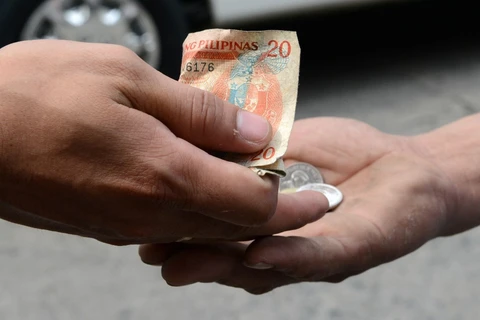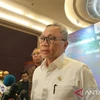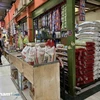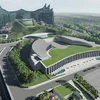Kuala Lumpur (VNA) - The Asian Development Bank (ADB) said the Philippine economy is forecast to grow faster than initially expected in 2022, following the relaxation of COVID-19 mobility restrictions, the expansion of the COVID-19 vaccination programme, and a rebound in investment and household consumption.
The Asian Development Outlook 2022 Supplement says the Philippine economy will grow at least 6.5% in 2022, up from the bank's April forecast of 6%.
The growth projection for 2023 remains at 6.3%. Downside risks to growth in the second half of 2022 may come from sharper-than-expected slowdowns in major industrial economies, possibly sustained elevated global commodity prices, and tighter financial conditions.
The Philippine economy's growth momentum has accelerated close to its ideal growth path, said the Manila-based bank's Philippines Country Director Kelly Bird.
Strong domestic demand supported by a pick-up in employment and remittance inflows, private investment expansion, and large public infrastructure projects will underpin the country's recovery from the economic impact of the pandemic, Bird added.
The ADB said wider COVID-19 vaccine coverage, with adolescents among those getting inoculated, and relatively mild health impacts from the Omicron variant have allowed the government to relax restrictions, which, in turn, spurred a resumption in expanded operations for most private businesses.
The unemployment rate in the country falls near pre-pandemic levels, which is 6% in May 2022, down from 7.7% a year earlier.
The ADB forecasts inflation to quicken to 4.9% and 4.3% in 2022 and 2023, respectively, on the back of higher global commodity prices, up from the ADB's April forecast of 4.2% in 2022 and 3.5% in 2023.
The Philippine government's economic team slashed its GDP target band for 2022 to 6.5 to 7.5% from 7 to 8% early this month due to "recent external and domestic developments."/.
The Asian Development Outlook 2022 Supplement says the Philippine economy will grow at least 6.5% in 2022, up from the bank's April forecast of 6%.
The growth projection for 2023 remains at 6.3%. Downside risks to growth in the second half of 2022 may come from sharper-than-expected slowdowns in major industrial economies, possibly sustained elevated global commodity prices, and tighter financial conditions.
The Philippine economy's growth momentum has accelerated close to its ideal growth path, said the Manila-based bank's Philippines Country Director Kelly Bird.
Strong domestic demand supported by a pick-up in employment and remittance inflows, private investment expansion, and large public infrastructure projects will underpin the country's recovery from the economic impact of the pandemic, Bird added.
The ADB said wider COVID-19 vaccine coverage, with adolescents among those getting inoculated, and relatively mild health impacts from the Omicron variant have allowed the government to relax restrictions, which, in turn, spurred a resumption in expanded operations for most private businesses.
The unemployment rate in the country falls near pre-pandemic levels, which is 6% in May 2022, down from 7.7% a year earlier.
The ADB forecasts inflation to quicken to 4.9% and 4.3% in 2022 and 2023, respectively, on the back of higher global commodity prices, up from the ADB's April forecast of 4.2% in 2022 and 3.5% in 2023.
The Philippine government's economic team slashed its GDP target band for 2022 to 6.5 to 7.5% from 7 to 8% early this month due to "recent external and domestic developments."/.
VNA























